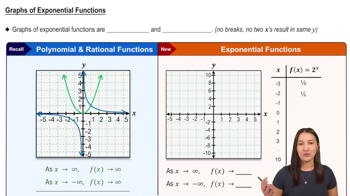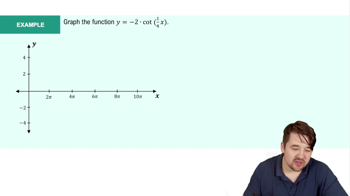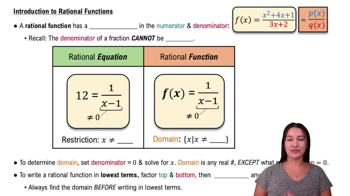Table of contents
- 0. Functions7h 52m
- Introduction to Functions16m
- Piecewise Functions10m
- Properties of Functions9m
- Common Functions1h 8m
- Transformations5m
- Combining Functions27m
- Exponent rules32m
- Exponential Functions28m
- Logarithmic Functions24m
- Properties of Logarithms34m
- Exponential & Logarithmic Equations35m
- Introduction to Trigonometric Functions38m
- Graphs of Trigonometric Functions44m
- Trigonometric Identities47m
- Inverse Trigonometric Functions48m
- 1. Limits and Continuity2h 2m
- 2. Intro to Derivatives1h 33m
- 3. Techniques of Differentiation3h 18m
- 4. Applications of Derivatives2h 38m
- 5. Graphical Applications of Derivatives6h 2m
- 6. Derivatives of Inverse, Exponential, & Logarithmic Functions2h 37m
- 7. Antiderivatives & Indefinite Integrals1h 26m
- 8. Definite Integrals4h 44m
- 9. Graphical Applications of Integrals2h 27m
- 10. Physics Applications of Integrals 2h 22m
1. Limits and Continuity
Finding Limits Algebraically
Problem 2.50b
Textbook Question
Horizontal and Vertical Asymptotes
Assume that constants a and b are positive. Find equations for all horizontal and vertical asymptotes for the graph of y = (√ax² + 4) / (x―b) .
 Verified step by step guidance
Verified step by step guidance1
To find the vertical asymptotes, set the denominator equal to zero and solve for x. This is because vertical asymptotes occur where the function is undefined. So, solve the equation x - b = 0.
The solution to x - b = 0 is x = b. Therefore, there is a vertical asymptote at x = b.
To find the horizontal asymptotes, analyze the behavior of the function as x approaches infinity or negative infinity. Consider the leading terms in the numerator and denominator.
The leading term in the numerator is √(ax²), which simplifies to √a * x. The leading term in the denominator is x. As x approaches infinity, the function behaves like (√a * x) / x.
Simplify (√a * x) / x to √a. Therefore, the horizontal asymptote is y = √a.
 Verified video answer for a similar problem:
Verified video answer for a similar problem:This video solution was recommended by our tutors as helpful for the problem above
Video duration:
6mPlay a video:
Was this helpful?
Key Concepts
Here are the essential concepts you must grasp in order to answer the question correctly.
Horizontal Asymptotes
Horizontal asymptotes describe the behavior of a function as the input approaches infinity or negative infinity. For rational functions, they can often be determined by comparing the degrees of the numerator and denominator. If the degree of the numerator is less than the degree of the denominator, the horizontal asymptote is y = 0. If they are equal, the asymptote is the ratio of the leading coefficients.
Recommended video:

Graphs of Exponential Functions
Vertical Asymptotes
Vertical asymptotes occur where a function approaches infinity, typically at values of x that make the denominator zero while the numerator is non-zero. To find vertical asymptotes, set the denominator equal to zero and solve for x. These points indicate where the function is undefined and can lead to infinite behavior in the graph.
Recommended video:

Introduction to Cotangent Graph Example 1
Rational Functions
A rational function is a function represented by the ratio of two polynomials. The behavior of rational functions, particularly their asymptotic behavior, is influenced by the degrees and coefficients of the polynomials in the numerator and denominator. Understanding the structure of rational functions is essential for analyzing their graphs, including identifying asymptotes.
Recommended video:

Intro to Rational Functions

 5:21m
5:21mWatch next
Master Finding Limits by Direct Substitution with a bite sized video explanation from Callie
Start learningRelated Videos
Related Practice







